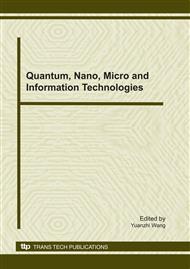p.460
p.465
p.470
p.476
p.482
p.488
p.492
p.498
p.504
A Wireless Sensor Network Route Algorithm for Mine Environment
Abstract:
The routing protocol which can meet the requirement of underground wireless sensor network plays a decisive role in improving the monitoring quality and the survival time of network. Because of the different energy supplement method of anchor nodes and unknown nodes, these two types of nodes are different energy levels, which determines that the task of the data forwarding should be completed by the blind node as far as possible. By combining the position information and cluster routing technology, a position-based cluster routing (PBCR) protocol is proposed. In the protocol the tunnel is divided into a number of regions and the nodes within the region form a cluster. The protocol chooses the blind node nearest to the base station in the region as cluster head and builds up the chain between the cluster heads as the network data transmission backbone which can help achieve the high-speed data transmission. Simulation results show that the PBCR protocol can ensure a balanced use of node energy and prolong the life cycle of the network.
Info:
Periodical:
Pages:
482-487
Citation:
Online since:
November 2010
Authors:
Price:
Сopyright:
© 2011 Trans Tech Publications Ltd. All Rights Reserved
Share:
Citation:


